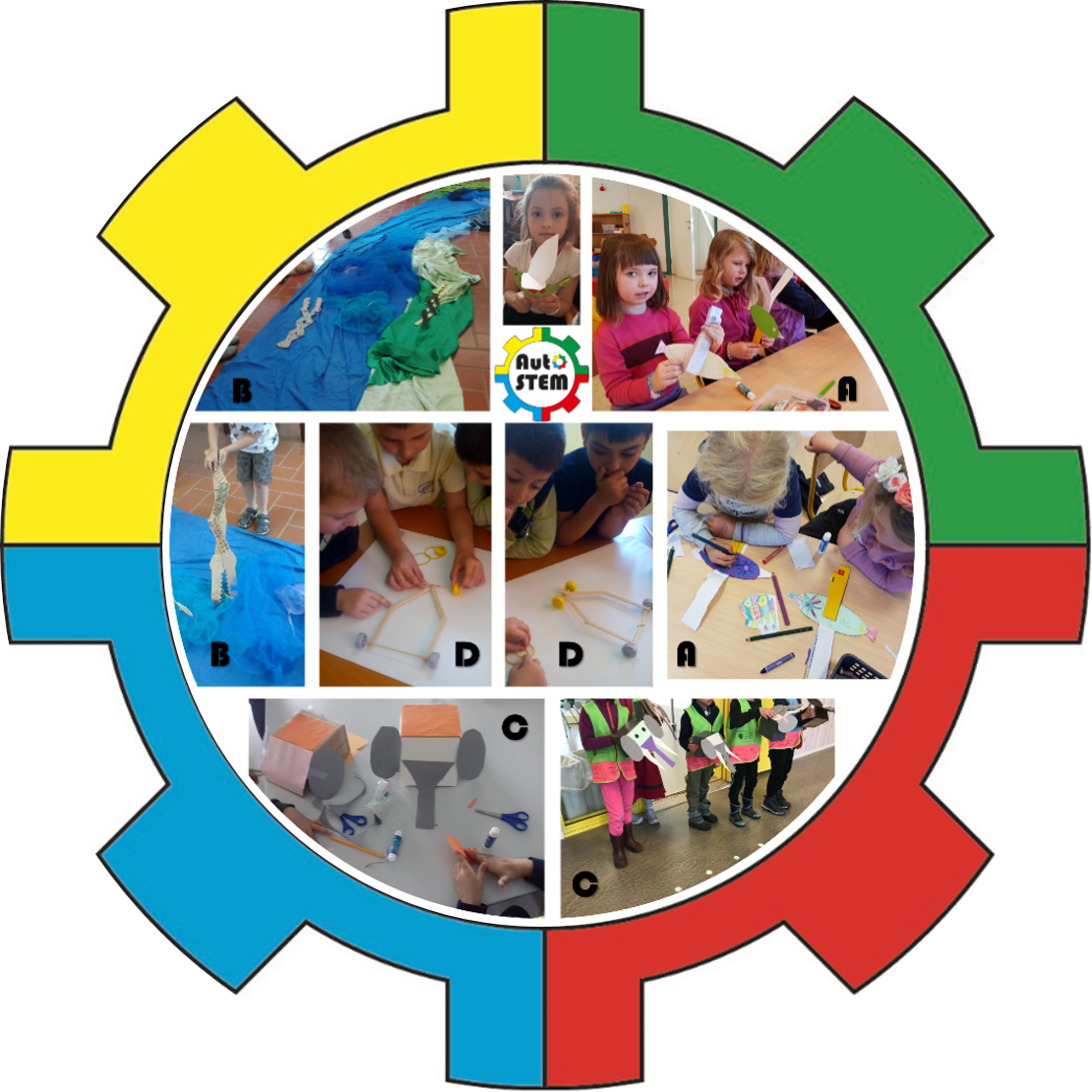The main purpose of searching for patterns is to develop a general understanding.
Non-mathematicians are sometimes frightened by mathematics because it is so
abstract, but with the right understanding of abstraction, it becomes a powerful tool accessible to everyone. Abstract means independent of our concrete experiences here and now. The learner discovers a mathematical pattern in a concrete situation, but it is not limited to this special case. Generalisation means understanding that the same pattern can be applied to many different situations and contexts, including every science, technology,
engineering, philosophy, and many different everyday situations.
Playing with a Jelly Bird is not ultimately about this toy. The experience and reflection on it will help children develop a general concept of bird and learn about their features and way of living. Building a Drawbridge or an Elevator is not only about these devices but will teach the children some general mechanical principles. Building a Snapping Crocodile with a Scissor arm mechanism will not only teach the children about crocodiles and mechanics, but in addition, the experience and reflection on it will help children develop general concepts of space, pattern and number.
Abstract thinking is powerful, but it is difficult to learn – however, perhaps not as difficult as you might think. While Piaget thought that children were not capable of abstract logical thinking before reaching the formal operational stage at about eleven years of age, newer research shows that this starts much earlier. The gap between concrete and abstract thought can be bridged by play. Otsuka and Jay (2017) found three features that support children’s transition from concrete to abstract thinking during block play.
- The child shares his or her thinking with other children or adults. This is directly linked to step two of the experiential learning cycle.
- There is enough time for the child to pause for reflection. The experiential learning cycle, especially step three, encourages reflection. In addition, there should be time for reflection-in-action in every part of the learning process.
- The child displays satisfaction over what he or she has achieved by a self-directed activity. When working with children in the AutoSTEM project, we experienced often “a high level of enthusiasm and the pleasure with which the children completed the task.” For Dewey (1934), satisfaction is one of the key features that distinguish the continuous experiencing of events from having an experience that has consequences for our future behaviour.
In contrast with such experience, we have an experience when the material experienced runs its course to fulfilment. Then and then only is it integrated within and demarcated in the general stream of experience from other experiences. A piece of work is finished in a way that is satisfactory; a problem receives its solution; a game is played through; a situation, whether that of eating a meal, playing a game of chess, carrying on a conversation, writing a book, or taking part in a political campaign, is so rounded out that its close is a consummation and not a cessation. Such an experience is a whole and carries with it its own individualizing quality and self-sufficiency. It is an experience.
Dewey, 1934, pp. 36– 37, emphasis in original
Even though it is important that a learning activity is finished in a way that is fulfilling and satisfactory for the children, the learning never stops. Every answer raises new questions and every new skill is ready to be used. The learning cycle continues.
Questions for reflection
The step from generalisation and abstract conceptualisation to applying the discovered principles is supported by Borton’s “Now, what?” questions. While the question “So what?” focuses on understanding the pattern, “Now, what?” is about future implications and applications. Here are some examples.
- Now, what experiences automata could generate interactions among children and adults?
- Now, what are possible ways to promote experiential learning in early childhood with everyday objects, that is, skewers, bottle tops, milk cartons, etc?
- Now, what other everyday objects would you consider useful (to STEM learning) to use for automata construction?
- Now, what is the potential of automata construction for the development of children’s number sense?
- Now, what could you do to take this activity forward?
- Now, what can you do to avoid that young children experience standard geometrical shapes in stereotypical ways, for example, with no rotations or reversals?
- Now, what are the possibilities to support opportunities for STEM learning through play with automata, particularly in settings where there is a “push-down” approach from school?

